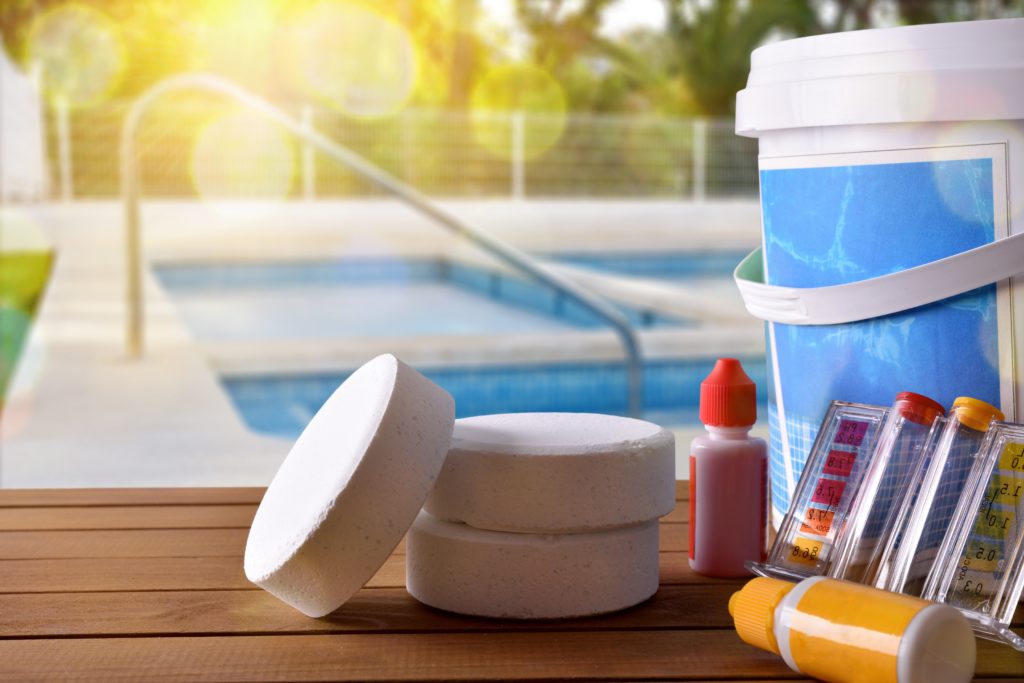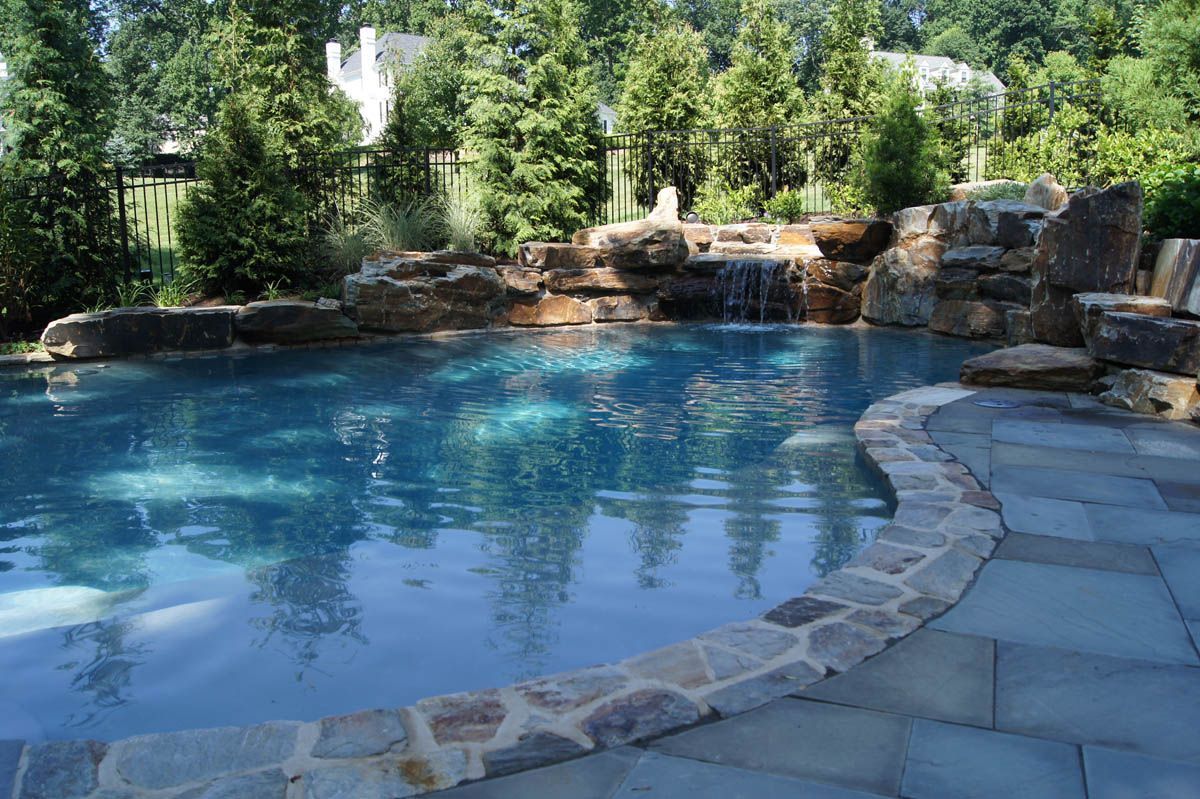Getting to Know Your Pool
In-ground pools come in all shapes and sizes and can function using only a pump and filter or a more complex and varied assortment of equipment. Regardless of the type of pool you have, there are some basics that apply to all pools. Here is an overview of pools, in general, to help you become more comfortable with your pool.
Pool Size:
Knowing the size of your pool is vital to adding the correct amount of chemicals. To calculate gallonage, start by measuring the length and the width of your pool. All measurements should be in feet.
To calculate the average depth, add the shallow depth to the deep end depth and divide by two.
- For rectangular pools: Length x Width x Average depth x 7.5
- For round pools: Length x Width x Average depth x 5.9
- For oval pools: Length x Width x Average depth x 6.7
- For free-form pools: Longest length x Widest width x Average depth x 5.8
Equipment:
At a minimum, all pools utilize a pump and filter to circulate and clean the water. Although not necessary, it’s common to have a combination of additional equipment to enhance the swimming pool experience.
- Main Pump – circulates the water from the pool to the filter equipment and back to the pool
- Filter – traps dirt, debris and other contaminants so clean water is returned to the pool
- Heater – heats the pool and/or attached spa
- Booster pump – powers an automatic pool cleaner or gives more power to spa jets or water features
- Salt chlorine generator – continuously and automatically makes and delivers chlorine
- Additional pumps – provides dedicated power to a specific water feature like spa returns, waterfall or deck jets
- Automatic cleaner – a robotic device that cleans the floor of the pool on its own (not pictured)
- Lights – illuminates the water in either one or different colors at night (not pictured)
- Automation system – allows you to control the pool equipment using a hand-held remote, smartphone or Amazon’s Alexa (not pictured)

Taking Care of Your Pool
Balancing water
Balanced pool water is the key to maximizing the life of your pool equipment and your plaster finish. Test and balance the water chemistry at least once a week.
The top three aspects of water to be tested are pH, alkalinity, and chlorine.
- High alkalinity and/or pH levels can lead to cloudy water and scaling to develop.
- Low alkalinity and/or pH levels will make water aggressive and corrosive, which over time, will damage the plaster and make it rough to the touch.
- Low chlorine levels will result in cloudy water and algae growth.
Learn the ideal chemical ranges and the chemicals to use.


Maintaining Equipment
Frequent equipment maintenance helps your pool run properly and will extend the life of the equipment. Here are some routine tasks to perform:
- Empty skimmer baskets and main pool pump basket every week or more often if needed.
- If your pool has a cartridge filter, the cartridges will need to be removed and cleaned. If your pool has a DE (diatomaceous earth) filter, the filter will need to be back washed.
- If you have an automatic pool cleaner, empty the debris bag as needed.
- Maintain the pool water level at halfway up the opening of the skimmer. If the water level gets too low, the pool equipment can be damaged. If the water level is too high, water circulation will be diminished.
Cleaning Pool
A clean pool is more inviting and sanitary. Ideally, a pool should be vacuumed at least once a week. Skim any leaves, bugs or other debris off the surface of the pool. Use a nylon brush on a pole to brush the tiles and finish as needed.
LIFESPAN OF Equipment and Finishes
Nothing lasts forever, including pool equipment and the structural components of your pool. The best way to keep your pool looking and operating its best is by having consistently balanced water, replacing wear and tear parts as needed and by following preventive maintenance recommendations.
Below is an approximation of how long pool equipment typically lasts before needing complete replacement. These estimates assume proper maintenance and care and average usage of a residential pool.
*It’s essential to keep the expansion joint caulked (with no gaps) to prevent freeze damage to the tile and coping.
Pool equipment
- Pump – 10 years
- Wear and tear parts: baskets, seals, gaskets
- Filter – 10-15 years
- Wear and tear parts: internal cartridges or grids, seals, pressure gauge
- Preventive maintenance: Acid soak grids every other year at closing
- Heater – 10 years
- Wear and tear parts: sensors, circuit board
- Booster pump – 5+ years
- Automatic cleaner – 7-10 years
- Wear and tear parts: debris bag, wheels, floats, back-up valves, chains
- Salt cell – 3-5 years
- Preventive maintenance: Acid clean internal blades every year at closing
- Automation – 20 years
- Lights housing (excludes bulbs) – 10 years
- Wear and tear parts: bulbs
- Safety cover – 10-15 years
- Wear and tear part: deck anchors, straps
Structural Components:
- Plaster:
- White Marble Dust – 10 years
- DiamondBrite® – 12-15 years
- PebbleTec® – 15-20+ years
- Tile – 10-15 years*
- Coping – 10-15 years*
- Caulk for expansion joint – 5-7 years
*It’s essential to keep the expansion joint caulked (with no gaps) to prevent freeze damage to the tile and coping.
